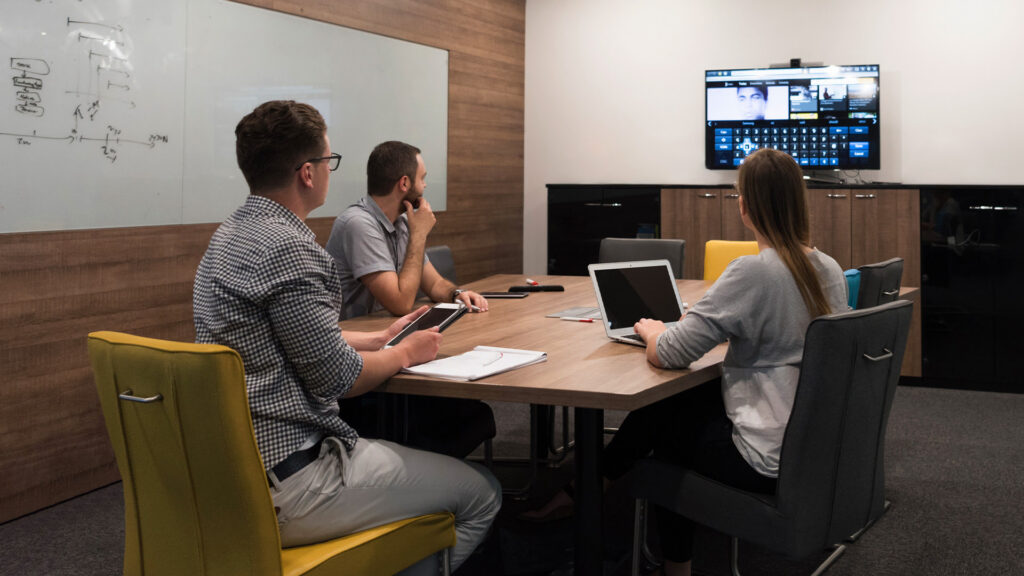Your Connected Path to the Future
We recently completed a consulting engagement to align the UC technology and room systems technology of a large organization. Strategically, we delivered a comprehensive roadmap to align their diverse technologies and move them forward with a cohesive UC&C framework. This in turn would set them up for significant opportunities to capture long term ROI from operational, procedural and strategic sources.
And then, they had a re-organization.
New Challenges Arising From a Re-Org
 All of a sudden, the new Executive in charge of IT Infrastructure had a lot on his plate and the execution of the UC&C Roadmap was just a small piece.
All of a sudden, the new Executive in charge of IT Infrastructure had a lot on his plate and the execution of the UC&C Roadmap was just a small piece.
The client didn’t have time to:
- Absorb the material
- Review the recommendations or
- Understand the roadmap and the strategic impact it could have on his organization.
Immediate operational decisions were required that impacted the long term UC&C direction. And he didn’t have time to build a relationship of trust with the consultants that had laid out the future roadmap for the organization.
Saving Your Way Into the Future?
Like all of us who are faced with making decisions constrained by limited time and looming deadlines, he had to rely on what he knew.
He started to eliminate strategic elements of the technology for the Room System standards because he didn’t understand why they were required or how they fit in. He thought he knew what was important, because he’s been in IT for 25+ years.
With the challenges in front of him, he planned to “save” his way into the future.
Over the last dozen years, often the business method of coping with change is to cut expenses. This is especially true in large organizations where a change in direction is slow to take effect. Cutting expenses on the other hand is quick to put in place.
But this is a slippery slope that’s hard to get off once you’re on it and it certainly won’t put your organization on the path to innovation and “Blue Oceans”.
Macro Market Trends
There are two current macro trends that I feel historians will look back at and use to define our time in history.
- The pace of change has gone exponential. We are at an inflection point in the rate of change and the impact is profound. You have to innovate to keep up with, let alone stay ahead of the inevitable – change. Gary Hamel has done some compelling work showing why we can’t do things the way we used to.
- The end of the Industrial Age and the beginning of the Connection Economy. Seth Godin writes about this. This shift is having a profound impact on businesses as things change.
ET Group helps organizations become more connected so they can better collaborate and innovate.
To do this effectively requires an understanding of how different disciplines or business offerings interact and come together as the nature of how we work changes.
The Workplace Of The Future
Meeting rooms are where workspace and technology really come together. Room systems must be effective places to meet where both the physical and virtual world intersect seamlessly. They must contain the right mix of conferencing technologies to enable the required level of collaboration and this will naturally lead to innovation.
The figure on the right shows the different disciplines that have always been separate, yet related and are now critically connected.
As the world changes, how is your business space requirements changing? After people costs, space costs are often the second most significant operational cost requirements of a business.
- How much space do you need?
- How will your space change?
- How can technology enable operational savings, productivity and strategic innovation?
Note: The importance of organizational culture and the need to focus on users and adoption for any significant change you introduce to your organization is not being discounted. This is a fundamental requirement.
Rethink Your Collaboration Workspace
We created this Infographic that highlights some interesting stats about the changing nature of work and how companies are adapting by:
- Adding more “We Space”
- Moving to smaller more efficient spaces
- Supporting alternative work strategies
To do this effectively and enable people to remotely collaborate, your room systems technology must align with your workers personal technology or a UC&C strategy. Note that 72% of people STILL come into the office to collaborate.
This is true whether your organization has 3 or 3,000 meeting rooms.
Meeting rooms are a scarce resource. Meeting rooms are an important part of your organization’s collaborative capabilities.
Are your rooms ready to conduct business in the Connection Economy? We can help design the perfect space for hybrid work – contact us.







